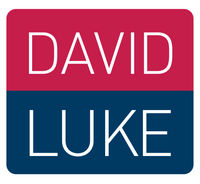How To Be Aware Of Green Washing
Our expert reveals how to be aware of greenwashing as the demand for sustainable companies increase by 83%.
Our managing director, Kathryn Shuttleworth provides her advice on how to recognise greenwashing within brands, as demands for more sustainable companies are on the rise.
With over a third of UK parents considering ‘green’ packaging as an essential purchase-driver and search demand for ‘sustainable companies’ increasing by 83% in a year, many companies have had to follow suit to meet the needs of the more eco-conscious family.
However, not every company is transparent in their approach to being sustainable and can mislead consumers into believing products are eco, ethical and good for the planet.
Therefore, we want to help bring awareness to families on what greenwashing is and provide tips on how to recognise it, so, you can continue your journey to a more sustainable lifestyle truthfully.
What is greenwashing?
Greenwashing is where a company makes an unsubstantiated claim to mislead or deceive customers into thinking that their brand and products are considered eco, ethical and good for the planet. This is harmful as it allows consumers to believe they’re buying ethically and could also be creating a smokescreen for a wider issue within the company, such as poor working conditions and the true cost of that item, regarding the environment or the workers.Top 3 sustainable ‘claims’ you should be aware of:
- “Made using Recycled Packaging” - David Luke suggests steering clear of packaging that claims it is made from biodegradable, degradable or compostable material. This is because, despite sounding environmentally friendly, they can cause more harm than good by contaminating recycling plants. Plastics do not decompose due to their molecular makeup and simply degrade into smaller micro plastics. These can then contaminate recycling routes causing them to end up in landfill instead of being recycled.
- “We’re Carbon Neutral” - Companies claiming they are Carbon Neutral are often never backed up with substantial information. For example, many companies simply offset their emissions by paying carbon companies to plant trees before looking at ways to reduce their own carbon footprint. Using locally sourced factories to manufacture their goods would be a more effective way to reduce their emissions in house.
- “Made using Recycled Fabric” – When brands use pre-consumer waste, this is waste that has been produced purely from offcuts during production rather than post-consumer waste which can be certified using GRS (Global Recycled Standard). Using recycled fibre is a much better for the planet as it saves energy and reduces CO2 making it important that brands use recycled fibres as opposed to virgin fibres.
4 easy ways to check a brands/products eco-credentials
- Research the company or brand and investigate their ethical practises with factories.
- See if they have an official certification on recycled or organic contents within their products.
- Check their ‘Corporate Sustainable Responsibility’ reports which are available on their websites.
- See if the company’s members are part of a certified organisation to substantiate their eco or ethical claims.








